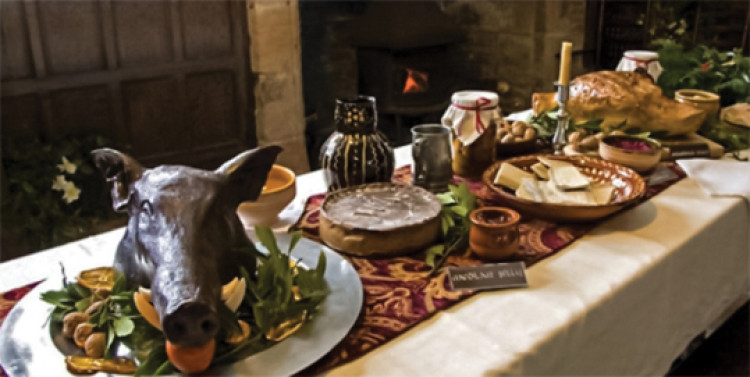'The Curious History of Christmas Foods' prompts recollections of festive days gone by for borough group
By Nub News Reporter 27th Nov 2024
By Nub News Reporter 27th Nov 2024

MEMBERS of Thurrock Local History Society and their guests were in festive mood at their November meeting.
Dr Peter Ross was the guest speaker and entertained with illustrations and quirky facts with a talk entitled 'The Curious History of Christmas Foods'.
He spoke of high status foods and started with an 1836 Christmas cookery book, one of many he showed us. In medieval times there were periods of feasting and fasting, driven by the Catholic religion, feasting being important, including Christmas.
Great birds were cooked including peacock and swan. The swan would be skinned and roasted, with the skin put back on, often on top of a pie. Goose was also popular, but you had to be wealthy to afford it.

A centre piece was a boar's head, the most popular dish being brawn, even in Jane Austin's time. In the 16th century decoration was added, such as rosemary dipped in silver etc or meringue, looking like snow.
Robert May's book in 1660 included a list of several courses, served like a buffet. From the 17th century meat and poultry were more prominent. Samuel Pepys ate mutton and chicken, also beef and mince pies. Most people used to like beef. By 1793 rabbit was the meal for labourers etc.
The Yorkshire Christmas pie was a bird within a bird, put in a pie, Queen Victoria enjoying a giant one. She also had a baron of beef roasted at Windsor Castle. The poor bought beef from a market. The very poor had nowhere to cook meat and took it to the local baker. It was unclear how they recognised 'their' beef when it was cooked! London butchers up to the mid-20th century still hung meat outside, sometimes decorated with holly.
Turkey had come from the New World in 1535 and 30 years' later it was already part of Christmas.
They were raised within a year and replaced swan, etc. Turkey cost more than a week's wages in the 1740s, reducing to less than a week in 1860 (equivalent of £400 today) and now just two hours. Up to 60% of families serve turkey at Christmas now, many raised in East Anglia.
Mince pies are the longest continuous Christmas food, originally containing minced meat. Cromwell tried unsuccessfully to ban Christmas – fast, not feast! There were various shapes and designs on lids. About the turn of the 19th century meat was dropped from mince pies, still containing dried fruits and spices.
Plum pottage was also popular, forerunner of Christmas pudding - the English have always loved puddings. Up to the early 17th century it was put in the stomach of an animal, before pudding cloths were used. In the 19th century moulds came about. They were sent out to South Africa in the Boer War – there was even an Empire Christmas Pudding recipe.

Twelfth Night Cake was also cooked. Sometimes a bean was hidden inside, the winner being king for a year. It was very rich and iced, bakers displaying one in their window. Later. porcelain characters replaced the bean, such as a king, knave, even down to a slut! Later marzipan was added. There was also a yule dough or doll. In the 18th century a 'baby' was made out of bread dough; a man made it and his wife would find it in the morning – Peter Ross said his father still made them.
Dr Ross's talk showed how traditional Christmas fare has changed over time, some members remembering a silver sixpence hidden in the pudding their mothers used to make.
The next meeting is also festive-themed as it will be the group's Christmas Party on Friday, 13 December.
The next lecture is at 8pm on 17 January 2025 at St John's Church Hall, Victoria Avenue, Grays, when John Matthews' talk is entitled 'Dainty and Fair but was she Virtuous?' Visitors are welcome.
CHECK OUT OUR Jobs Section HERE!
thurrock vacancies updated hourly!
Click here to see more: thurrock jobs
Share:
















